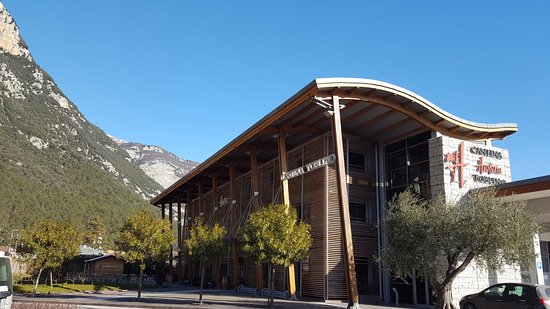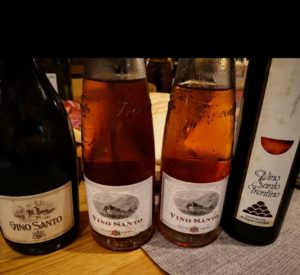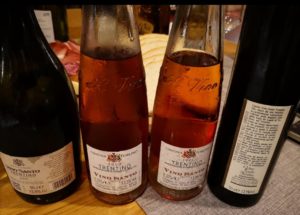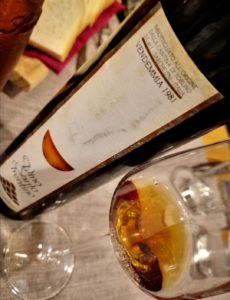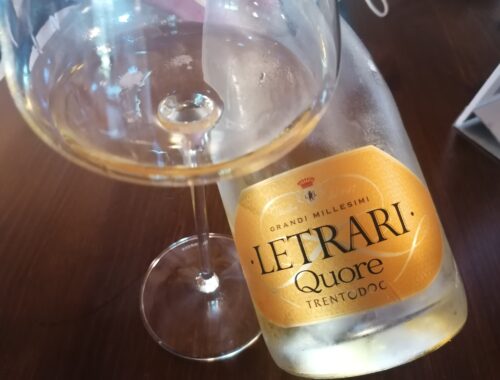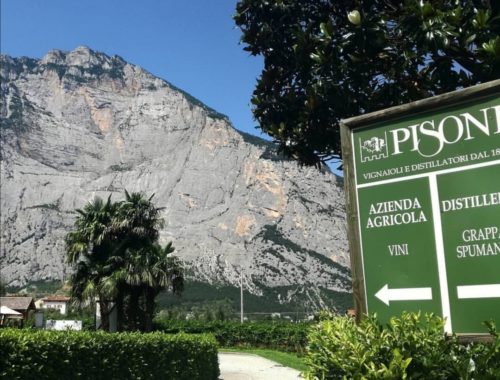It’s time for wine guides. Most of the 2020 editions are presented and launched in this time of the year in Italy so, among the several anticipations and the enthusiastic posts of the rewarded producers, I catch the award as “Best dessert wine of the year” (for the wine guide Gambero Rosso) gained by Cantina Toblino with its Vino Santo 2003. An excellent product of Trentino area (north-east of Italy) I focused on last summer to discover more about this rare Italian dessert wine.
Answering the question of the title “why” is quite an ambitious task that certainly requires a complex response.
Why Toblino winery
Cantina Toblino is a cooperative founded in 1965, it focuses since the beginning on local traditions hence: Schiava (pale red wine) and Vino Santo until the technological and varietal evolution occurred between the 70s and 80s when it opens up to international varieties (especially Chardonnay and Pinot Noir) for the production of Metodo Classico Spumante (Classic Method sparkling) under the local and prestigious Italian appellation Trento DOC. A profound change occurs, then, in the 2000s with the purchase of 40 hectares of land to grow some of the best grapes as well as to experiment before involving the whole partners. Today they work with about 600 members out of a total of about 860 Ha but, if we exclude the supply of grapes for big brands (like Cavit and Ferrari) and the production of bulk wine and bag-in-box, the annual bottle production is around 400,000.
Why “Vino Santo” (literally: Holy wine)
Not to be confused with the Tuscan “Vin Santo” (without the final “o” and different for vines and production technique) is the dessert wine produced in Trentino-Alto-Adige region and, more specifically in Valle dei Laghi (Lakes Valley) in the province of Trento city. A territorial gem produced from the grape Nosiola that the Toblino winery produces since the very beginning. The harvest takes place around mid-October (in the past also at the beginning of November) and then the grapes are dried on racks until the Holy Week (this is the reason for the name). The grapes dry and so concentrate the sugars with a final yield of only 20% of the total weight. Then, the fermentation starts before a long period of maturation and ageing that can last up to 10-15 years. In some cases, part of the bunches can be attacked by Botrytis cinerea, as for Toblino winery.
Why the Lakes Valley
The soils generally have a calcareous composition with clay incursions but what’s distinguishing here is the microclimate influenced by the presence of 2 winds: Ora (comes from the south and during the day it dries up any trace of humidity) and Peler (comes from the North and it’s more intense, cooler and contributes in the diurnal range that will favour the development of aromas). They both mitigate the weather in summer and, even better, in the cool winters.
Why 2003
Despite the current regulations allowing shorter times, the productive tradition of Vino Santo foresees very long maturation times in small barrels (at Toblino: 200 and 400 l) and ageing. Toblino, together with other historical producers, strives to preserve the tradition intact thus 2003 is their last vintage on the market with a sugar content of about 150/160 g per L.
Served in ½ litre bottle (although the historic bottles are tall and long, 375cl), it is amber and luminous. The bouquet is intense with aromas of molasses, chestnut honey, almond paste, slate, dried apricot, smoke and a balsamic breath along with ethereal hints of paint. In the mouth it is viscous with strong hints of caramel and cooked apricots, with an excellent and balance between sugars, concentration of fruit and acidity also supported by a great savoury character. Its young age (well yes) is, anyway, shown by means of opulence and sugary approach compared to older vintages. A wine with remarkable ageing potential as evidenced by the tasting of old vintages, much older than 2003.
- Vino Santo 2000
Still amber but even deeper. More ethereal than the previous one on the nose with more evident nail polish notes along with dates and porcini mushrooms; it is more oxidative, less complex, less “exuberant”, less opulent, less concentrated on the palate.
- Vino Santo 1995
Extraordinary shape, probably my favourite of this vertical tasting. The colour seems to have stabilized on a deep and extremely bright amber. The nose appears paradoxically younger than the year 2000: fruity with aromas of preserved peach and marmalade that reveal the attack of botrytis with extra notes of honey, eucalyptus, toasted almond and hints of pistachio. Silky and with a great balance between acids and sugars.
- Vino Santo 1981
Amber with even darker veins. The tertiary aromas (chocolate, walnut, smoke, toasted hazelnut, coffee powder and dried figs) prevail over fresher notes of liquorice. Drier on the palate with a common thread that links it to all the others: minerality.



